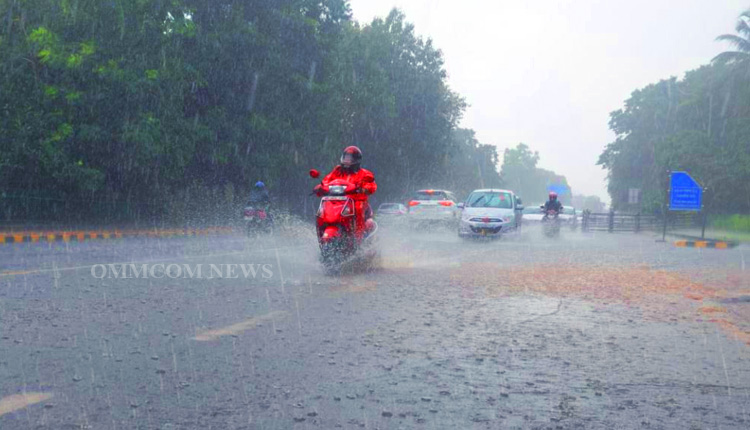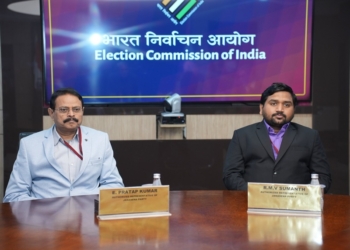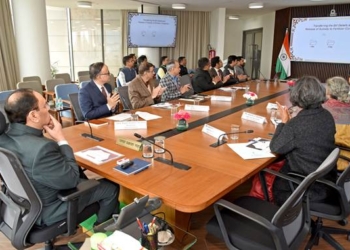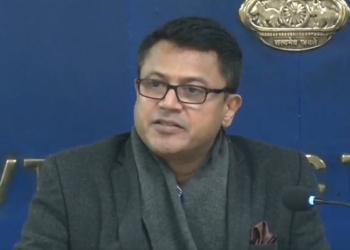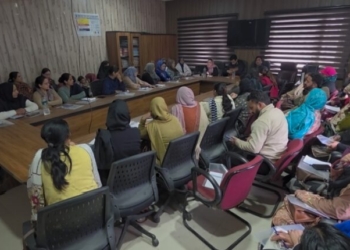Jaipur: Rajasthan, once known for drought, is not that dry now. The desert state has now joined the select few states, where it is raining more than normal. Within a month of monsoon, almost every area of Rajasthan has become waterlogged.
This season has received 80 per cent more rain than the normal rainfall so far. This is the highest in the whole country. Till now it has been believed that Rajasthan receives the least rainfall in the country, especially in the Thar desert districts. But in the last decade, this myth has also been broken.
According to the report of the Meteorological Department, in the last 12 years, not even a single year has passed when Rajasthan has received less rainfall than normal. Rajasthan was supposed to receive 206 mm of rain by now but in July itself this figure has crossed 370 mm.
Rajasthan has not received less than normal rainfall in a single season since 2011 for 12 consecutive years.
Even in these 12 years, the least rainfall was recorded in 2018. Then only 393 mm of water was rained in Rajasthan. That year minus 6 per cent rainfall was recorded in Rajasthan. And in 2011, the maximum rainfall was recorded at 590 mm.
Talking about this season, Rajasthan has already received about 400 mm of rain before the end of July.
In such a situation, it is believed that if there is normal rainfall in August and September, then this time a new record will be created. This could be the highest rainfall ever in Rajasthan in a season.
According to the report of the India Meteorological Department (IMD), between the years 1961 to 2010 and 1971 to 2020, the rainfall figures in the states have changed in 50 years. In many states, where rainfall has decreased, in some it has increased. Somewhere normal.
Rajasthan is among the states where the rain trend has changed the most and the fastest. Rajasthan has seen the maximum increase of 10 to 33 per cent. Apart from this, the trend has definitely changed in some parts of Jammu-Kashmir, Odisha, Western Gujarat and Madhya Pradesh, but not as much as in Rajasthan.
The northeastern states once used to receive the most rainfall, but there has been the biggest change. Cherrapunji of Meghalaya was called the place in India where it rained the most. But now it does not rain there like before. In the last 50 years, the rainfall in the northeastern states has decreased by 90 to 120 per cent.
Now let’s study the rainfall trends in Rajasthan:
In 2022, East Rajasthan received 25 per cent more rainfall than its prescribed figure. Whereas in western Rajasthan it was 58 per cent more.
In 2021, 16 per cent more rainfall is reported in Eastern Rajasthan and 20 per cent more in Western Rajasthan.
In 2020, there was minus 2 per cent rainfall in East Rajasthan. Whereas in western Rajasthan it was 21 per cent more.
In 2017, where East Rajasthan received minus 8 per cent rainfall, that is, it received less water than the prescribed figure. On the other hand, 39 per cent more rains are recorded in western Rajasthan.
Similarly in 2015, East Rajasthan received minus 10 per cent rainfall. On the other hand, western Rajasthan received 45 per cent more rainfall.
In Rajasthan, the districts of Barmer, Jaisalmer, Jodhpur, Bikaner, Jalore, Churu, Hanumangarh, Nagaur, Pali and Sriganganagar are considered in western Rajasthan, rest of the districts are counted in eastern Rajasthan.
Radheshyam Sharma, director of the Meteorological Department, Rajasthan, says that there has been an increase in the areas of Rajasthan and western India and a decrease has been seen in the areas of eastern India. This is in a way the effect of climate change.
Talking about the whole country, it is a bi-polar shift. That is, there is less rain in eastern India and more rain in western India.
Another feature observed in monsoon rainfall is called inter-seasonal variability. There is also decadal variability, there is a change in the trend of rainfall every 10 years, that too has been observed.
It is not necessary that the rainfall which is increasing in Rajasthan at present will continue to increase in the coming 10 to 50 years as well. But it has come out that there has been a change in the rainfall pattern. Apart from this, the events of heavy rains are also increasing, this is part of climate change.
At present, Rajasthan has received 370 mm of rain, but despite this, Rajasthan has recorded more than 80 per cent rainfall. On the other hand, despite receiving about 600 mm of rainfall in Maharashtra, only 17 per cent more rainfall than normal has been considered there.
This is how the Meteorological Department decides the scale of rain:
More than 60 per cent: Extremely heavy rain
20 to 59 per cent: More rain than normal
Minus 19 to 19 per cent: Normal rain
Minus 20 to minus 59 per cent: Less than normal rain
Minus 60 to 99 per cent: Very little rain or drought
(IANS)




